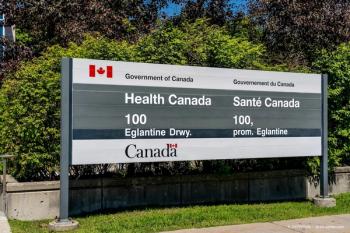
Combination therapy cuts treatment numbers by 50%: it's official
Visudyne (verteporfin) and Avastin (bevacizumab) combination therapy reduces the number of retreatments needed by half, according to Phase II study results presented at the annual Macula Society Conference in Florida, US.
Visudyne (verteporfin) and Avastin (bevacizumab) combination therapy reduces the number of retreatments needed by half, according to Phase II study results presented at the annual Macula Society Conference in Florida, US. The study, conducted in patients with subfoveal choroidal neovascularization (CNV) secondary to age-related macular degeneration (AMD), also showed that 30% of patients treated with combination therapy required one treatment only during the follow-up period.
Dr Michael Potter of Vancouver Hospital and the British Columbia Eye Care Centre, Canada, conducted the study to determine whether Visudyne, at low or very low fluence rates, in combination with Avastin, reduces the average number of treatments required, compared with Avastin alone. Thirty-six patients were assigned to one of three treatment groups: (1) low fluence Visudyne followed by Avastin; (2) very low fluence Visudyne followed by Avastin; and (3) Avastin alone.
Intravitreal Avastin was delivered within two hours of photodynamic therapy (PDT) at baseline. Patients returned monthly thereafter for best-corrected ETDRS visual acuity (VA) testing, optical coherence tomography (OCT), and ocular examination. Thirty per cent of the patients treated using the combination therapy required only a single combination treatment compared with Avastin monotherapy, with which all patients required additional treatments. Retreatment decisions were based primarily on OCT. PDT was administered at months zero, three, four, five or six, with a minimum three-month interval between Visudyne/sham PDT treatments.
Thirty-five patients completed the six-month visit. The average number of Avastin treatments in Group 3 was 5.1, compared with 2.8 in Group 1 and 2.4 in Group 2. Over six months, patients who were treated in the first and second treatment groups required significantly fewer treatments on average than those treated in Group 3 (p=0.005 and p<0.001, respectively). Each group experienced an average improvement in VA at month six, compared with baseline (Group 1: p>0.05; Group 2: p=0.003; and Group 3: p<0.001, respectively). Both combination therapy and monotherapy used in the study were well tolerated.
The study concluded that, in patients with subfoveal CNV secondary to AMD, a combination therapy of Visudyne followed by Avastin reduces, by half, the number of treatments required during the first six months to gain similar VA compared with Avastin monotherapy. The study was sponsored by US manufacturers of Visudyne, QLT, Inc.
Newsletter
Get the essential updates shaping the future of pharma manufacturing and compliance—subscribe today to Pharmaceutical Technology and never miss a breakthrough.















































